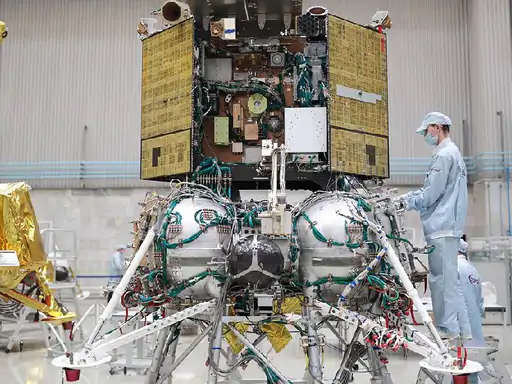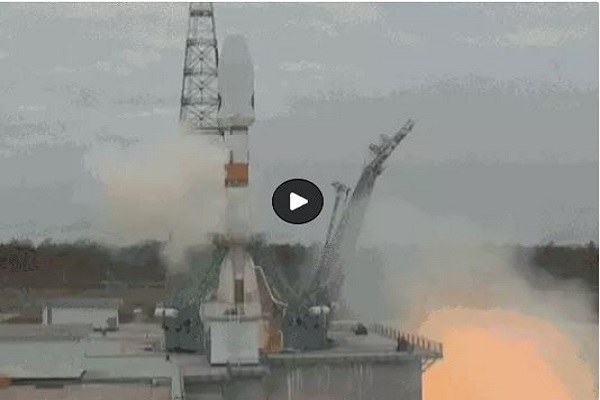[ad_1]
This vehicle has been launched with the help of Soyuz 2.1B rocket. This rocket is about 46.3 meters long. Its diameter (diameter) is 10.3 meters. Its weight is 313 tons. This four-stage rocket launched the Luna-25 lander into orbit outside the Earth.
According to the Russian space agency Roscosmos, Luna-25 has gone to the moon. It will continue to move towards the moon for 5 days. After this it will move in its orbit for 7-10 days. It may land on its surface on August 21 or 22.

Russia plans to land it on the South Pole of the Moon. There is a possibility of getting water at this pole of the moon. Along with this, India has launched Chandrayaan-3 on July 14. It will land on the moon on August 23.
Luna-25 will take samples of lunar soil and analyze it
Luna-25 has a rover and a lander. The weight of the four-legged lander is 800 kg. Luna-25 will practice soft landing. It will collect and analyze lunar soil samples. Also will do long lasting research.

For the first time there will be a landing on the south pole of the moon
Russia had previously landed the Luna-24 mission on the moon in 1976. All lunar missions to date have landed at the lunar equator, marking the first time a mission has landed at the moon’s south pole. NASA said in 2018 that there is water on the South Pole of the Moon.
The objective of the mission is to develop soft-landing technology
Roscosmos said that the purpose of this mission is to develop soft-landing technology. In addition to researching the interior structure of the Moon and discovering other essentials including water. The lander is expected to operate on the lunar surface for up to a year.
Why is this mission special?
Luna-24, launched in 1976, returned safely to Earth with about 170 grams of lunar dust. Astronomer Vladimir Sardin estimated that the Luna-25 mission had a 50 percent chance of success.
[ad_2]
Source link
